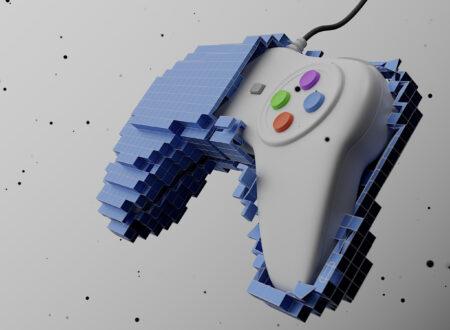Introduction to the Gaming Industry
The gaming industry stands at the forefront of innovation, transforming how we interact with technology and entertainment. From pixelated screens to lifelike graphics, this dynamic field has evolved dramatically over the past few decades. As players continue to seek immersive experiences, developers are stepping up their game in ways we could only dream of a few years ago.
With an ever-growing audience and advancements in technology, new trends are shaping the future of play. Whether you’re a casual gamer or a die-hard enthusiast, there’s no denying that what lies ahead is thrilling. Let’s dive into some of these emerging trends that are set to redefine our gaming landscape.
The Rise of Mobile Gaming
Mobile gaming has exploded in popularity over the past few years. With smartphones in nearly every pocket, games are now more accessible than ever.
Players enjoy a diverse range of experiences, from casual puzzles to intense action titles. The convenience of playing on-the-go allows users to dive into their favorite games anytime and anywhere.
Developers have adapted by creating innovative gameplay mechanics optimized for touch screens. This shift has opened doors for unique narratives and interactive experiences that were previously reserved for consoles or PCs.
Moreover, mobile gaming has fostered community engagement through social features such as multiplayer modes and leaderboards. Gamers can connect with friends or compete against players worldwide.
The integration of augmented reality is also transforming how we interact with our surroundings while playing. Titles like Pokémon GO illustrate the potential for immersive gameplay right outside our front door.
Virtual and Augmented Reality Games
Virtual and augmented reality games are transforming the gaming landscape. They offer players an immersive experience that traditional formats simply can’t match.
Imagine stepping into a digital world where you can interact with every element around you. That’s the allure of virtual reality (VR). Players wear headsets that transport them to fantastical realms or realistic simulations, making gameplay feel almost lifelike.
On the other hand, augmented reality (AR) blends digital elements with our real-world environment. Games like Pokémon GO have shown how AR can encourage exploration and social interaction in everyday settings.
The technology behind these experiences is advancing rapidly. Developers are finding innovative ways to create more engaging content, pushing boundaries further than ever before. The future promises even more remarkable developments as hardware becomes more accessible and software continues to evolve, inviting everyone into new dimensions of play.
Esports: The Growing Industry of Competitive Gaming
Esports has exploded into a global phenomenon, captivating millions of fans and players alike. Major tournaments fill stadiums worldwide, showcasing elite gamers competing for substantial prize pools. The thrill of watching skilled athletes battle it out in real-time keeps audiences on the edge of their seats.
Streaming platforms like Twitch and YouTube have transformed how we experience gaming. Gamers share their skills live, allowing fans to connect with them directly. This interaction creates a vibrant community where viewers become participants through chats and reactions.
Sponsorships from top brands are pouring in as companies recognize the massive reach of esports events. Teams now resemble traditional sports franchises, complete with branding and merchandise.
As universities introduce esports programs, pathways for aspiring players continue to grow. Scholarships and competitive leagues nurture young talent, ensuring that the industry thrives for years to come.
Subscription Services and Cloud Gaming
Subscription services are reshaping how players access games. Rather than purchasing titles individually, gamers can now enjoy a library of options for a flat monthly fee. This model encourages exploration and experimentation with different genres.
Cloud gaming takes this concept even further. It eliminates the need for expensive hardware by allowing users to stream games directly to their devices. Imagine playing high-end titles on a smartphone or tablet without bulky consoles.
This shift democratizes gaming, making it accessible to more people than ever before. Players don’t have to invest heavily in equipment; they just need a stable internet connection.
As these services continue to evolve, we may see even more innovative features like personalized game recommendations based on play styles. The future is bright as companies race to enhance user experience through technology and creativity.
The Future of Traditional Consoles and PC gaming
Traditional consoles and PC gaming have long been the backbone of the gaming industry. As technology evolves, these platforms are adapting in intriguing ways.
Next-gen consoles are not just about enhanced graphics; they also focus on connectivity and community. Features like cross-play allow gamers to compete across different systems, blurring lines between platforms. This fosters a more inclusive gaming environment.
PC gaming continues to thrive with customizable hardware options that appeal to enthusiasts. The rise of cloud-based solutions enables gamers to access high-quality titles without needing expensive setups.
The integration of social media into gameplay is another exciting trend. Gamers can easily share experiences, strategies, and achievements with friends or a broader audience online.
As developers push boundaries, expect hybrid models that merge traditional gameplay with innovative technologies. The landscape will remain rich and dynamic as both consoles and PCs evolve alongside emerging trends in the industry.
Conclusion
The gaming industry is evolving at a rapid pace. With new technologies and shifting player preferences, the landscape looks different today than it did just a few years ago. Mobile gaming has opened doors to reach wider audiences, making games more accessible than ever.
Virtual and augmented reality offer immersive experiences that were once only dreams. As these technologies improve, they will continue to redefine how we interact with games. Esports have transformed casual playing into serious competition, drawing millions of viewers worldwide and creating lucrative careers for professional gamers.
Subscription models and cloud gaming are changing how players access their favorite titles. Convenience is key in today’s fast-paced world, allowing gamers to dive into vast libraries without the need for extensive downloads or physical media.
Traditional consoles and PC gaming still hold strong appeal but may need to innovate further as trends shift towards mobility and accessibility.
The future of play promises even more exciting developments on the horizon. Keeping an eye on these emerging trends can help both gamers and developers navigate this dynamic industry effectively.




